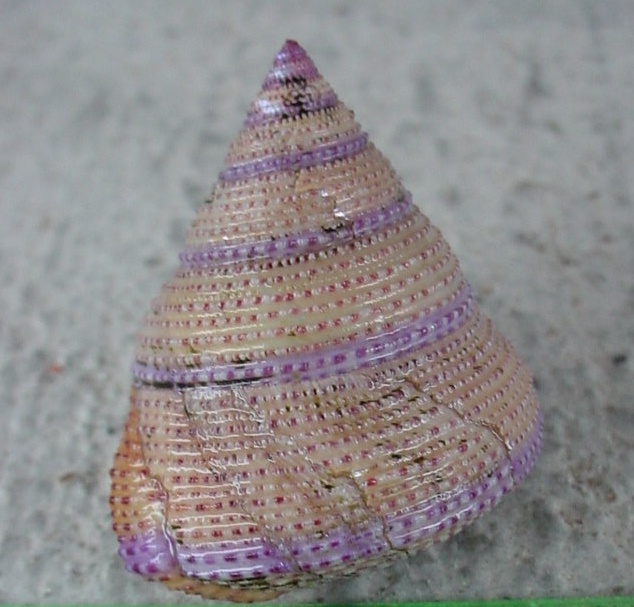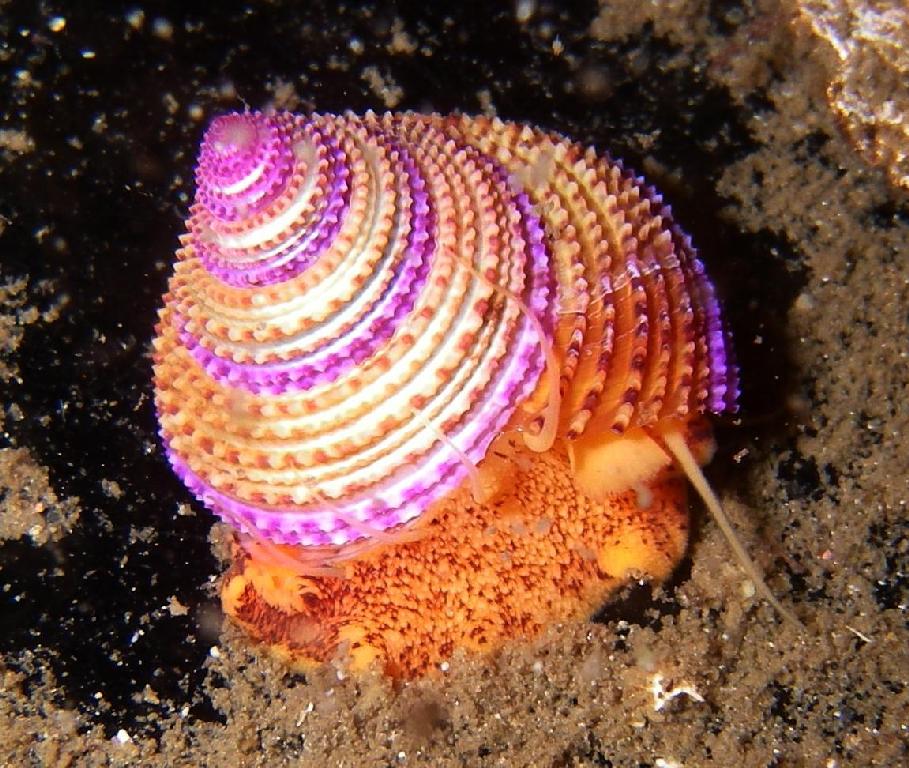Calliostoma annulatumCommon name(s): Ringed top snail, Purple-ringed top snail |
|
| Synonyms: |  |
| Phylum Mollusca
Class Gastropoda Subclass Prosobranchia Order Archaegastropoda Suborder Trochina Family Trochidae |
|
| Calliostoma annulatum collected by Dave Cowles, summer 2002. Unknown location near Rosario. Approximate height/width: 2 cm | |
| (Photo by: Dave Cowles) | |
How to Distinguish from Similar Species: C. variegatum also has beaded spiral ridges but they are all tan or brown and the animal is cream (not orange) with brown spots. C. ligatum has unbeaded spiral ridges and the animal is orange.
Geographical Range: Forester Island, Alaska to Isla San Geronimo, Baja California
Depth Range: Almost never intertidal. More common on the open coast than in the Sound/Straits, although it is abundant subtidally in some areas of the San Juan Islands.
Habitat: Seaweeds in shallow water. Lives higher on kelp than does C. ligatum but below C. canaliculatum in CA.
Biology/Natural History: This species (along with C. ligatum and C. canaliculatum) were collected by Captain James Cook and were among the first mollusk species on the US Pacific Coast to be named. May climb up kelp stalk toward surface in bright weather--can climb 20-30 feet in a day. Feeds on the kelp itself, or on encrusting diatoms, bryozoans, and hydroids. Will also eat detritus and copepods, even may scavenge dead fish or other sea creatures. May attack anemones or nudibranchs. Apparently have "lips" or "jaws" which serve to cut up prey. Mucus is secreted on the shell, which may help deter predation.
| Return to: | |||
| Main Page | Alphabetic Index | Systematic Index | Glossary |
References:
Dichotomous Keys:
Kozloff,
1987
Smith and Carlton, 1975
General References:
Morris
et al., 1980
Flora
and Fairbanks, 1966
Kozloff
1993
Scientific Articles:
General Notes and Observations: Locations, abundances, unusual behaviors, etc.:

Underwater photo by Aaron Baldwin.
Authors and Editors of Page:
Dave Cowles (2002): Created original page